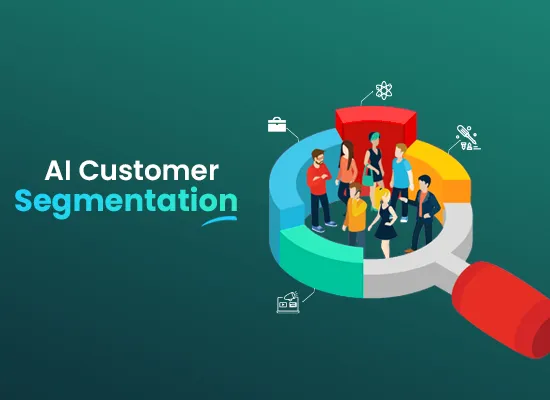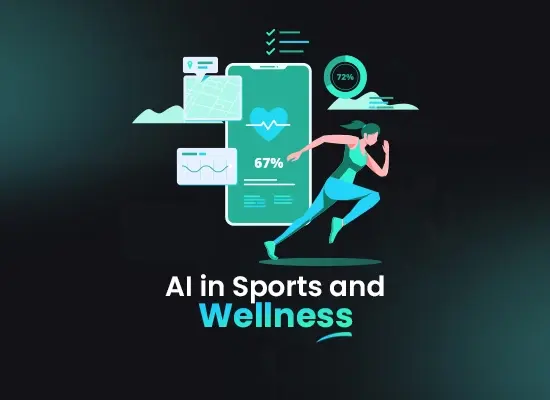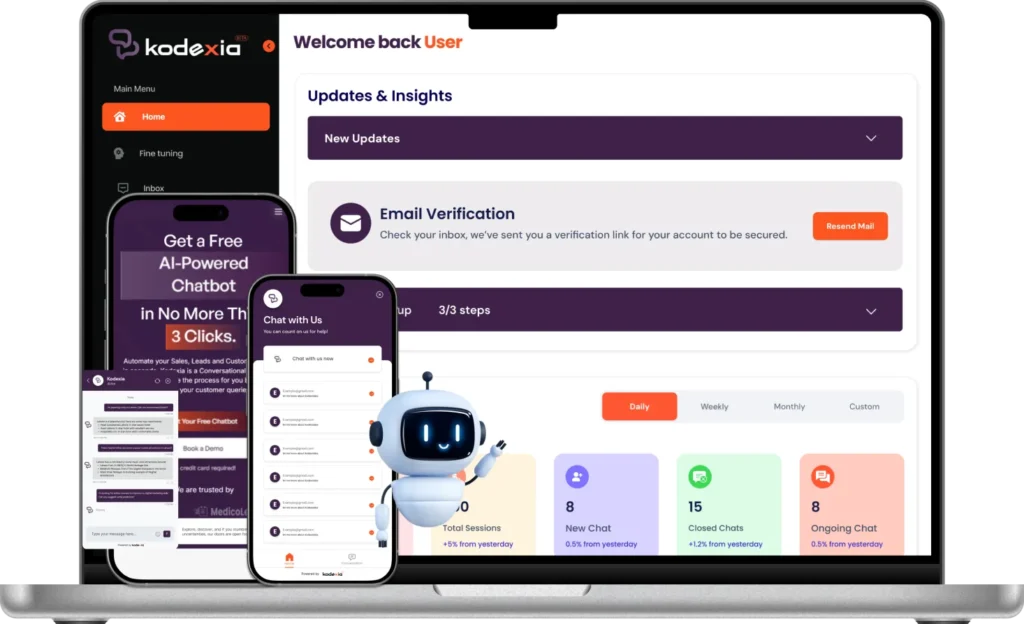AI Customer Segmentation – Connecting Customers for Targeted Engagement

Contents
AI-powered customer segmentation revolutionises marketing strategies by precisely categorising diverse customer groups based on behavioural patterns, preferences, and demographics.
What is AI Customer Segmentation?
AI customer segmentation refers to the strategic process of dividing a customer base into distinct groups or segments using artificial intelligence (AI) techniques. In the realm of AI in customer support, AI customer segmentation plays a pivotal role in enhancing the customer experience by allowing businesses to tailor their services and interactions according to the unique characteristics and preferences of different customer segments.
In today’s competitive landscape, AI in customer support is gaining traction as organisations seek innovative ways to deliver personalised and targeted experiences. AI-driven customer segmentation leverages advanced algorithms to analyse vast amounts of customer data, including demographics, purchase history, browsing behaviour, and interactions with the company across various channels.
One of the key advantages of AI in customer segmentation is its ability to identify patterns and trends that may not be apparent through traditional methods. By harnessing the power of machine learning and predictive analytics, businesses can uncover valuable insights into customer behaviour and preferences, enabling them to anticipate needs, personalise offerings, and optimise marketing strategies.
Furthermore, AI in customer service is greatly enhanced through effective segmentation, as it enables businesses to deliver relevant content, recommendations, and support services to each customer segment. Whether through targeted email campaigns, personalised product recommendations, or tailored assistance via chatbots and virtual assistants, AI-driven segmentation ensures that customers receive timely and meaningful interactions that resonate with their individual needs and preferences.
Moreover, AI-based customer segmentation extends beyond marketing and sales to encompass various aspects of customer engagement. By segmenting customers based on their communication preferences, engagement history, and responsiveness to different channels, businesses can optimise their outreach efforts and foster stronger connections with their audience. Whether through proactive outreach, targeted promotions, or personalised messaging, AI-powered segmentation enables organisations to engage customers in a more meaningful and impactful manner.
The Importance of AI Customer Segmentation:
In modern business dynamics, the integration of AI in customer support, customer experience, and customer engagement has become paramount. Among these facets, AI customer segmentation stands out as a pivotal tool that revolutionises the way businesses understand and cater to their clientele. This article delves into the indispensable role played by AI based customer segmentation in optimising customer support, elevating the customer experience, and fostering enhanced customer engagement.
AI in customer support has evolved from mere ticketing systems to sophisticated platforms capable of analysing vast datasets in real-time. By harnessing AI algorithms, businesses can efficiently triage customer queries, prioritise urgent issues, and personalise responses based on the segmented characteristics of the customers. Consequently, AI-powered customer support systems streamline operations, reduce response times, and enhance overall customer satisfaction.
Moreover, the infusion of AI in customer experience initiatives empowers businesses to deliver personalised interactions at scale. Through AI-driven customer segmentation, companies can glean valuable insights into individual preferences, behaviour patterns, and purchasing habits. Armed with this knowledge, businesses can tailor product recommendations, promotional offers, and communication channels to resonate with each customer segment, thereby amplifying the overall customer experience and fostering brand loyalty.
Furthermore, AI-based customer segmentation serves as a catalyst for enriching customer engagement strategies. By segmenting customers based on their demographics, psychographics, and transactional histories, businesses can orchestrate targeted marketing campaigns, personalised outreach efforts, and proactive communication channels. This proactive approach not only fosters deeper connections with customers but also cultivates a sense of belonging and affinity for the brand.
In essence, the importance of AI in customer segmentation cannot be overstated in the contemporary landscape of customer-centricity. By leveraging AI in customer support, businesses can streamline operations and enhance responsiveness. Similarly, AI in customer experience endeavours enables personalised interactions that resonate with individual preferences. Furthermore, AI-powered customer segmentation fuels innovative customer engagement strategies that drive brand loyalty and advocacy. As businesses continue to harness the power of AI, the strategic integration of AI customer segmentation remains a cornerstone for delivering unparalleled customer satisfaction and sustainable growth.
Traditional Approaches to Customer Segmentation:
Customer segmentation, a cornerstone of marketing strategy, has evolved significantly with the advent of AI technologies. However, it’s essential to recognise the roots of segmentation methodologies before delving into the transformative power of AI in customer support, customer experience, customer segmentation, and customer engagement.
1- Demographic Segmentation:
Traditionally, businesses have employed various techniques to segment their customer base. One common approach involves demographic segmentation, where customers are categorised based on factors such as age, gender, income, and occupation. This approach provides a broad understanding of the customer base but often lacks the granularity needed for personalised interactions.
2- Geographic Segmentation:
Another traditional method is geographic segmentation, which divides customers based on their location. While useful for targeting local markets, it may overlook important psychographic or behavioural nuances.
3- Psychographic Segmentation:
Psychographic segmentation, on the other hand, focuses on customers’ lifestyles, values, and interests. By understanding customers’ motivations and preferences, businesses can tailor their marketing efforts more effectively.
4- Behavioural Segmentation:
Furthermore, behavioural segmentation categorises customers based on their purchasing behaviour, such as frequency of purchases, brand loyalty, or product usage. This approach allows businesses to target customers with relevant offers and promotions.
Despite the effectiveness of these traditional segmentation approaches, they have limitations in today’s rapidly evolving digital landscape. This is where AI in customer support, AI in customer experience, AI in customer segmentation, and AI in customer engagement come into play.
AI technologies, powered by machine learning algorithms, revolutionise customer segmentation by analysing vast amounts of data to identify patterns and trends that human analysts may overlook. In customer support, AI-powered chatbots can provide instant assistance to customers, categorising their queries and feedback to inform segmentation strategies. Similarly, AI in the customer experience enhances personalisation by analysing customer interactions across various touchpoints, such as websites, mobile apps, and social media platforms. By understanding customer preferences and behaviours in real-time, businesses can deliver hyper-targeted experiences that drive engagement and loyalty.
Moreover, AI-driven customer segmentation goes beyond traditional demographics or psychographics by leveraging advanced predictive analytics. By predicting future trends and preferences, businesses can proactively tailor their marketing campaigns to individual customers, maximising customer satisfaction. In customer engagement, AI technologies enable dynamic segmentation, where customer profiles are continuously updated based on real-time data. This allows businesses to adapt their engagement strategies on the fly, delivering the right message to the right customer at the right time.
Challenges in Implementing AI Customer Segmentation:
AI in customer support has revolutionised the way businesses interact with their clientele, offering unparalleled opportunities for personalised engagement and enhanced customer experiences. One critical aspect of this transformation is AI customer segmentation, a process that leverages machine learning algorithms to categorise customers based on various attributes and behaviours. However, despite its potential benefits, implementing AI based customer segmentation poses several challenges that organisations must overcome to maximise its effectiveness in improving customer engagement and overall satisfaction.

1- Data Quality and Accessibility:
One of the primary challenges in AI customer segmentation lies in the quality and accessibility of the data. Effective segmentation relies heavily on comprehensive and accurate data sets encompassing various customer attributes, behaviours, and preferences. However, organisations often struggle to access high-quality data from disparate sources, leading to inconsistencies and inaccuracies in segmentation models. Additionally, ensuring data privacy and compliance further complicates the process, requiring robust mechanisms for data governance and regulatory adherence.
2- Algorithm Selection and Optimisation:
Choosing the right algorithms for AI customer segmentation is another significant hurdle. With a plethora of machine learning techniques available, organisations must select algorithms that align with their specific business objectives and customer segmentation goals. Moreover, optimising these algorithms to deliver accurate and actionable insights requires expertise in data science and continuous experimentation. Failure to choose appropriate algorithms or fine-tune them effectively can result in suboptimal segmentation outcomes, hindering efforts to enhance customer engagement and satisfaction.
3- Integration with Existing Systems:
Integrating AI customer segmentation capabilities with existing customer support infrastructure poses a significant integration challenge. Many organisations operate on legacy systems that may lack compatibility with modern AI and Machine Learning Development, necessitating complex integration efforts. Moreover, ensuring seamless data flow between disparate systems while maintaining data integrity and security adds another layer of complexity to the integration process. Without proper integration, organisations risk inefficiencies and inconsistencies in customer segmentation, undermining its potential to drive meaningful improvements in customer experience and engagement.
4- Interpretability and Transparency:
The interpretability and transparency of AI-driven segmentation models present another set of challenges. As AI algorithms become increasingly sophisticated, understanding how they arrive at segmentation decisions becomes more difficult for human operators. Lack of interpretability not only hinders trust in the segmentation models but also limits the ability to identify biases or errors that may impact the accuracy of segmentation results. Moreover, regulatory requirements such as GDPR mandate transparency in algorithmic decision-making, further underscoring the importance of addressing these challenges to ensure ethical and compliant use of AI in customer segmentation.
5- Continuous Learning and Adaptation:
AI customer segmentation is not a one-time endeavour but a continuous process that requires ongoing learning and adaptation. Customer preferences, behaviours, and market dynamics evolve over time, necessitating regular updates to segmentation models to remain relevant and effective. However, implementing a robust framework for continuous learning and adaptation poses logistical and operational challenges, including resource allocation, data refresh cycles, and model retraining processes. Without a systematic approach to continuous improvement, segmentation models risk becoming outdated and less predictive, diminishing their value in driving customer engagement and satisfaction.
Limitations of Traditional AI Customer Segmentation Methods:
AI in customer support and customer experience enhancement, the utilisation of AI customer segmentation techniques has garnered significant attention. Leveraging AI in customer engagement strategies has become pivotal for businesses aiming to personalise interactions and foster long-term relationships with their clientele. However, despite the widespread adoption of AI in customer engagement initiatives, traditional AI based customer segmentation methods exhibit notable limitations that impede their effectiveness in delivering tailored experiences. This article delves into these constraints, shedding light on their implications for AI-driven customer support and customer experience optimisation.
Challenges of Traditional AI Customer Segmentation Methods:
Traditional approaches to AI based customer segmentation often suffer from a lack of precision, failing to accurately categorise customers based on their preferences, behaviours, and needs. This imprecision hampers the efficacy of AI in customer engagement endeavours, as personalised interactions heavily rely on accurate segmentation.
1- Limited Adaptability to Dynamic Customer Behaviour:
The dynamic nature of customer behaviour poses a significant challenge for traditional AI customer segmentation methods. As AI in customer support strives to cater to evolving customer needs and preferences, rigid segmentation models struggle to adapt swiftly, leading to suboptimal engagement outcomes.
2- Inadequate Utilisation of Data Sources in AI Customer Segmentation:
Despite the abundance of data available for analysis, traditional AI customer segmentation methods often underutilize diverse data sources. Failure to harness the full spectrum of data, including contextual and real-time inputs, constrains the granularity and relevance of customer segments, hindering effective customer engagement strategies.
3- Over Reliance on Historical Data:
Many traditional AI based customer segmentation methods heavily rely on historical data, overlooking the significance of real-time insights in shaping customer interactions. In the fast-paced landscape of AI in customer experience, relying solely on past behaviour limits the adaptability and responsiveness of segmentation approaches, leading to missed opportunities for meaningful engagement.
4- Limited Integration with AI in Customer Engagement Platforms:
Seamless integration with AI-powered customer engagement platforms is paramount for the efficacy of customer segmentation methods. However, traditional approaches often lack the flexibility and interoperability required to integrate seamlessly with diverse AI-driven engagement tools, impeding the delivery of cohesive and personalised customer experiences.
Implications and Recommendations:
Addressing the limitations of traditional AI based customer segmentation methods is essential for unlocking the full potential of AI in customer support, customer experience enhancement, and customer engagement initiatives. Embracing advanced AI technologies, such as machine learning algorithms and natural language processing, can enhance the accuracy and adaptability of customer segmentation models. Moreover, prioritizing the integration of diverse data sources and real-time insights into segmentation processes can enable more granular and contextually relevant customer categorization. By transcending the constraints of traditional approaches, businesses can harness the transformative power of AI to foster deeper connections with customers and drive sustainable growth in an increasingly competitive landscape.
Understanding AI Customer Segmentation:
Let’s dive into the transformative role of artificial intelligence (AI) in enhancing customer support, experience, and engagement through precise segmentation strategies. In today’s competitive market landscape, businesses are increasingly turning to AI-powered solutions to streamline their customer interactions, optimise service delivery, and drive customer satisfaction.
AI in customer support has emerged as a game-changer, enabling organisations to automate routine inquiries, resolve issues promptly, and provide personalised assistance round the clock. By leveraging advanced algorithms and natural language processing (NLP) capabilities, AI-powered chatbots and virtual assistants can efficiently handle a wide range of customer queries, freeing up human agents to focus on more complex tasks.
Moreover, AI in customer experience has revolutionised how businesses interact with their clientele. By analysing vast amounts of customer data in real-time, AI algorithms can uncover valuable insights into consumer behaviour, preferences, and sentiment. This granular understanding enables companies to tailor their products, services, and marketing strategies to meet the unique needs of different customer segments, fostering loyalty and driving revenue growth.
In AI customer segmentation, sophisticated machine learning algorithms play a pivotal role in categorising customers based on various attributes such as demographics, purchasing history, browsing behaviour, and engagement patterns. By segmenting customers into distinct groups, businesses can devise targeted marketing campaigns, personalised recommendations, and customised offerings that resonate with each segment’s preferences and interests.
Furthermore, AI in customer engagement encompasses a diverse array of AI-driven solutions aimed at enhancing customer interactions across multiple touchpoints. From predictive analytics and sentiment analysis to recommendation engines and personalised messaging, AI technologies empower businesses to orchestrate seamless and immersive customer journeys that drive engagement, conversion, and advocacy.
Future Trends in AI Customer Segmentation:
In the ever-evolving landscape of customer-centric businesses, the integration of AI in customer support, customer experience enhancement, customer segmentation, and customer engagement strategies is becoming increasingly prevalent. As businesses strive to deliver personalised experiences at scale, leveraging AI technologies has emerged as a pivotal trend shaping the future of customer relationship management.
1- AI in Customer Support:
AI-driven customer support systems are revolutionising traditional customer service models. With advancements in natural language processing (NLP) and machine learning algorithms, AI-powered chatbots and virtual assistants are capable of handling a wide array of customer inquiries and issues autonomously. These intelligent systems analyse historical data through data engineering services to provide accurate responses in real-time, thus improving response times and overall efficiency in addressing customer needs.
2- AI in Customer Experience:
Enhancing the customer experience (CX) is a top priority for businesses seeking to gain a competitive edge. AI plays a crucial role in this domain by enabling predictive analytics and sentiment analysis. By analysing vast amounts of customer data, AI algorithms can anticipate customer preferences, behaviours, and pain points, enabling businesses to tailor their offerings and interactions accordingly. This proactive approach not only fosters customer satisfaction but also cultivates long-term loyalty.
3- AI Customer Segmentation:
Effective customer segmentation is essential for targeted marketing campaigns and personalised engagement strategies. AI-driven segmentation goes beyond traditional demographic factors, incorporating behavioural, psychographic, and transactional data to create granular customer profiles. Machine learning algorithms identify patterns and trends within these datasets, enabling businesses to segment their customer base dynamically and accurately predict future behaviours. This level of segmentation empowers organisations to deliver highly tailored experiences that resonate with individual customers, driving conversion rates and revenue growth.
4- AI in Customer Engagement:
Customer engagement is a continuous process that spans multiple touchpoints throughout the customer journey. AI facilitates proactive engagement by analysing customer interactions across various channels, including social media, email, and website interactions. By leveraging natural language understanding (NLU) and predictive modelling, AI-powered systems can identify opportunities for personalised engagement in real-time. Whether through targeted recommendations, personalised offers, or proactive support, AI enhances customer engagement by fostering meaningful interactions that drive satisfaction and brand advocacy.

Conclusion:
AI customer segmentation represents a powerful tool for businesses looking to harness the potential of AI in customer support, enhance the customer experience, and drive meaningful engagement. By leveraging advanced algorithms and data analytics, organisations can gain deeper insights into their customer base, optimise their marketing strategies, and deliver personalised experiences that resonate with their audience.
While traditional approaches to customer segmentation laid the groundwork for understanding customer diversity, AI in customer support, AI in customer experience, AI in customer segmentation, and AI in customer engagement elevate segmentation strategies to new heights. By harnessing the power of AI, businesses can unlock deeper insights, drive personalised interactions, and ultimately cultivate long-lasting customer relationships in today’s digital era.
AI in customer support holds immense potential for transforming customer experiences and engagement; implementing AI customer segmentation presents numerous challenges that organisations must address proactively. By tackling issues related to data quality, algorithm selection, integration, interpretability, and continuous learning, businesses can unlock the full potential of AI-driven segmentation to deliver personalised, timely, and impactful interactions that drive customer satisfaction and loyalty in today’s competitive landscape.
The future of AI in customer segmentation is poised to revolutionise how businesses interact with their customers. By harnessing the power of AI in customer support, customer experience enhancement, customer segmentation, and customer engagement, organisations can unlock valuable insights, streamline operations, and deliver exceptional experiences that resonate with individual preferences and expectations. As AI technologies continue to evolve, businesses must stay agile and proactive in adopting these trends to stay ahead in today’s competitive market landscape.
























